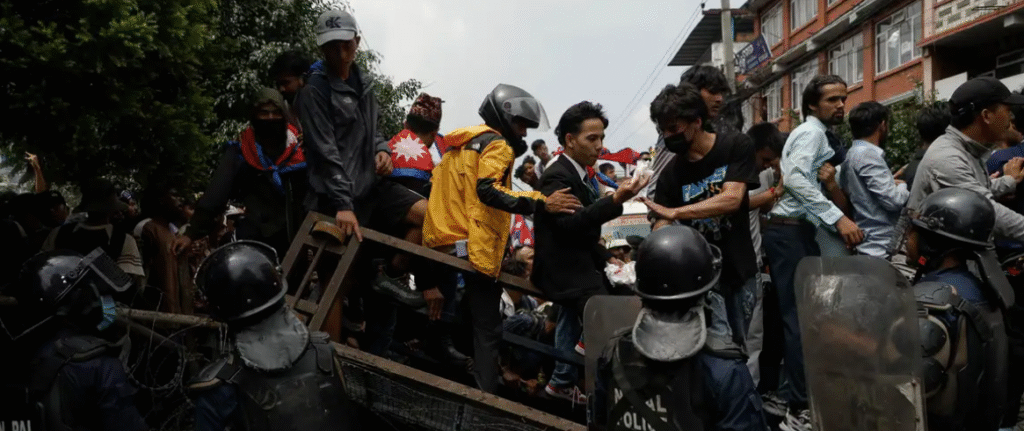Nepal has been rocked by one of the largest youth-led protests in its modern history, after the government banned 26 major social media platforms, including Facebook, WhatsApp, X (formerly Twitter), and YouTube. What started as scattered demonstrations quickly escalated into violent clashes with security forces in Kathmandu and other major cities. The unrest has left at least a dozen people dead and more than a hundred injured, plunging the Himalayan nation into a political and generational crisis.
Social Media Ban Sparks Outrage and Mass Demonstrations
The government defended its decision by claiming that platforms operating in Nepal needed to formally register with authorities, citing concerns over misinformation, national security, and foreign influence.

For many young people, the ban felt like a betrayal. Social media is not only their space for communication and creativity but also an outlet for political engagement and job opportunities in Nepal’s growing digital economy. Protesters carried placards with slogans as “Stop corruption, not social media” and “Our voices cannot be banned.” The demonstrations spread from Kathmandu’s Singha Durbar the seat of parliament to other cities including Pokhara, Biratnagar, and Bharatpur, turning into a nationwide movement within days.
Police Crackdown Leaves Deaths and Injuries
Authorities responded with overwhelming force. As protesters tried to breach barricades around the restricted parliamentary zone, security forces fired tear gas and rubber bullets to disperse the crowds. As tensions escalated, security forces fired live rounds. Local media and international outlets report that violence has claimed at least 16 lives across the country, while hospitals struggle to treat hundreds of injured demonstrators.
Witnesses described scenes of chaos, with students and young professionals collapsing on the streets, police charging into crowds, and ambulances struggling to reach the wounded. Human rights groups have condemned the excessive use of force, warning that Nepal risks sliding into deeper authoritarianism if it continues to silence dissent through violence.
Government Declares Curfews and Deploys the Army
In response to the protests, the government declared curfews across central Kathmandu and other hotspots. . Yet, rather than calming the situation, these measures have fueled greater resentment. Many Nepalis argue that the government is criminalizing peaceful protest while ignoring the real issues of corruption, unemployment, and lack of accountability that have fueled discontent among youth.

Videos of soldiers patrolling the streets, alongside testimonies of frightened families unable to contact loved ones due to the ban, have drawn global concern. The United Nations and international rights organizations have called for restraint, urging the government to respect fundamental freedoms.
Why Gen Z Is Leading Nepal’s Biggest Uprising in Years
This movement reflects more than anger over social media access. It highlights the frustrations of a generation that feels excluded from decision-making, denied economic opportunities, and betrayed by leaders they see as corrupt and self-serving. Generation Z, which makes up a large share of Nepal’s population, has grown up in a digital world where connectivity is essential to identity and opportunity.
By cutting off platforms overnight, the government struck at the very core of how young Nepalis engage with society. What started as a protest over apps has become a broader fight for democracy, transparency, and generational respect.

